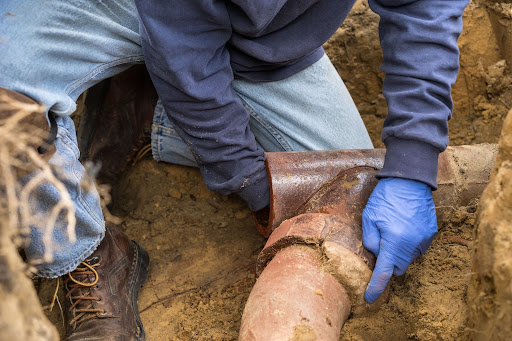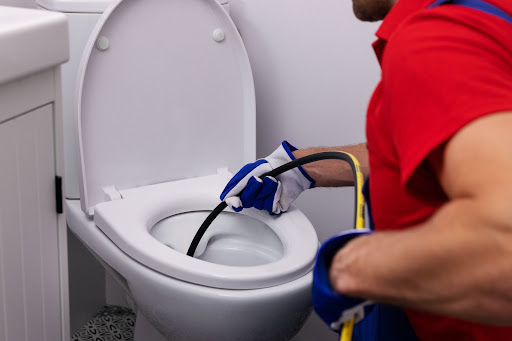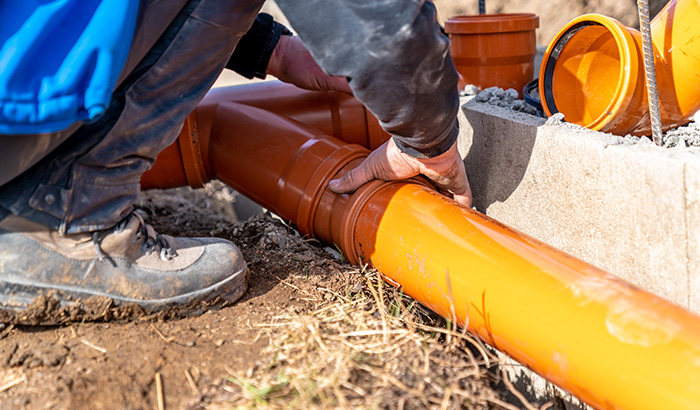Maintaining the integrity of a home’s infrastructure is paramount, and a key component is regular sewer line maintenance. The sewer line is a fundamental element responsible for transporting wastewater and sewage away from our residences and commercial spaces, ensuring a hygienic and safe environment. When properly maintained, a sewer line operates seamlessly, often unnoticed, but it’s impossible to overstate its importance.
When a sewer line is clogged, it leads to an array of problems, ranging from unpleasant odors to significant property damage. A clogged sewer line disrupts the normal flow of water and waste, causing inconvenience and potentially posing health risks. Regular maintenance is pivotal to prevent such issues and to ensure the longevity and optimal functionality of the sewer line.
In this article, we will plunge into the intricacies of sewer line maintenance, exploring the significance of regular cleaning, the signs indicating a clogged sewer line, and the preventive measures one should take to avert severe complications.
Our aim is to equip you with the knowledge and insights needed to maintain a healthy and efficient sewer system, safeguarding your property and well-being.
Understanding Sewer Lines
To begin, a sewer line is an integral and indispensable component of any residential or commercial plumbing system. It serves the vital function of transporting wastewater and sewage from buildings to appropriate treatment or disposal facilities, ensuring the sanitation and environmental well-being of the community.
The sewer line consists of several elements, including lateral lines, which connect individual properties to the main sewer line, and manholes, which provide access points for inspection, maintenance, and repairs.
Understanding the structure and functionality of a sewer line is essential for effective sewer line maintenance. The lateral lines are typically the responsibility of the property owner, while the main lines are maintained by the local municipality or utility company. A well-maintained sewer line ensures the smooth and unobstructed flow of waste, preventing backups, overflows, and risks of health hazards.

Importance of Regular Cleaning
Regular cleaning is a cornerstone of effective sewer line maintenance. It is the proactive approach to preventing the accumulation of debris, grease, and other obstructions that lead to a clogged sewer line.
When a sewer line is clogged, it can manifest in various disruptive ways, including slow draining, unpleasant odors, and water backup, all of which impact the daily life and health of the occupants.
The importance of regular cleaning extends beyond immediate convenience. It contributes to the longevity and performance of the sewer line, reducing the likelihood of severe damage and costly repairs.
By addressing potential issues early, property owners avoid the detrimental effects of neglected sewer lines, such as structural damage to the property and environmental contamination.
In essence, regular cleaning and maintenance of the sewer line are not merely about averting blockages; they are about sustaining the integrity of the plumbing system, preserving property value, and fostering a healthy and safe living environment. By embracing a diligent approach to sewer line maintenance, we ensure the resilience and efficiency of our sewer systems, protecting both our communities and the environment.
Recommended Cleaning Frequency
Establishing a regular schedule for sewer line maintenance is pivotal in preventing the undesirable repercussions of a clogged sewer line. The frequency of cleaning is contingent on a variety of factors, including the age and material of the pipes, the presence of trees and their roots nearby, and the overall usage level of the sewer system.
Typically, a general guideline is to have a professional inspection and cleaning every 18 to 22 months; however, this might vary based on individual circumstances.
Understanding the specific needs of your sewer line is imperative in determining the appropriate maintenance schedule. For instance, older sewer lines or those in proximity to tree roots may necessitate more consistent attention to mitigate the risk of blockages and damage. Regular assessments and timely interventions are critical components of effective sewer line maintenance, allowing for the identification and resolution of potential issues before they escalate into major complications.
Signs of a Clogged Sewer Line
Recognizing the early signs of a clogged sewer line is essential for prompt intervention and mitigation of damage. Common indicators include slow-draining water, unpleasant odors emanating from drains, and water backup in toilets and sinks. These signs indicate obstructions within the sewer line, requiring immediate attention to prevent further deterioration of the system.
When confronted with signs of a clogged sewer line, seeking professional advice is critical. Expert assessment accurately diagnoses the underlying issue, whether it’s a blockage, a leak, or structural damage, and proposes suitable solutions. Addressing the signs of a clogged sewer line promptly is a fundamental aspect of sewer line maintenance, ensuring the preservation of property integrity, environmental health, and occupant well-being.
Maintaining vigilance for signs of sewer line issues and adhering to a regular cleaning schedule are integral practices in sustaining the functionality and health of our sewer systems. By doing so, we contribute to the longevity of our infrastructure and the overall well-being of our communities.
DIY Cleaning Methods
Adopting do-it-yourself methods may be an effective initial approach to sewer line maintenance, especially for minor blockages. Regular flushing of the lines with water and utilizing mixtures of baking soda and vinegar aids in maintaining a clear and functional sewer line. Additionally, employ commercial drain cleaners sparingly to dissolve minor blockages, but caution is advised as excessive use will lead to pipe damage.
However, while these methods might be beneficial for maintaining sewer line integrity, they have their limitations. When a sewer line is clogged extensively, or DIY methods fail to resolve the issue, it is imperative to seek professional intervention. A comprehensive and expert assessment is crucial to accurately identify and address the root cause of the blockage, ensuring the restoration of optimal sewer line functionality.
Professional Cleaning Services
Professional cleaning services play a pivotal role in comprehensive sewer line maintenance. These services offer a range of solutions, from expert assessments to specialized cleaning techniques, addressing the diverse needs of sewer lines.
The utilization of advanced equipment, such as cameras and hydro-jetting tools, enables professionals to thoroughly clean and inspect the sewer line, ensuring the removal of any obstructions and the prevention of potential future issues.
The advantages of professional cleaning extend beyond mere blockage removal. It provides a detailed insight into the condition of the sewer line, allowing for the identification of leaks, damages, and potential areas of concern. Opting for professional services for sewer line maintenance is a prudent approach to safeguarding the longevity and efficiency of the sewer system, mitigating the risks associated with a clogged sewer line.

Preventative Measures
Implementing preventative measures is a foundational aspect of effective sewer line maintenance.
Regular inspections, avoiding the disposal of grease, oils, and non-biodegradable items down the drain, and adhering to a consistent cleaning schedule are paramount in preventing blockages and ensuring the seamless operation of the sewer line.
By adopting a proactive stance towards sewer line maintenance, property owners reduce the likelihood of encountering a clogged sewer line, thereby avoiding the associated inconveniences and potential damages. The integration of preventative practices into regular maintenance routines is instrumental in preserving the structural integrity and functionality of the sewer line, contributing to a healthier and more sustainable living environment.
A balanced combination of DIY methods, professional services, and preventative measures constitutes a holistic approach to sewer line maintenance, fostering a harmonious coexistence with our essential infrastructure.
Restoring Your Sewer Line With Utah Disaster Cleanup
Maintaining the operational integrity of sewer lines is a critical aspect of property management and environmental stewardship. Regular sewer line maintenance, coupled with a proactive approach to identifying and addressing potential issues, is essential in preventing the detrimental impacts of a clogged sewer line.
Whether it’s through DIY cleaning methods, professional assessments, or the implementation of preventative measures, each step we take contributes to the overall health and longevity of our sewer systems.
Utah Disaster Cleanup, a renowned service provider, exemplifies the importance of professional intervention in sewer line maintenance and water damage restoration. Their comprehensive services, ranging from expert assessments to specialized cleaning and restoration, underscore the pivotal role of professional expertise in addressing the multifaceted needs of sewer lines.
Keeping routine maintenance of the lines connected to your home will help with the longevity of the sewer lines. But if disaster strikes, Utah Disaster Cleanup will ensure the meticulous care and restoration of the pipes, safeguarding your property and the environment from the adverse effects of sewer line blockages and damages. Contact us when you need help restoring your home.
The journey towards maintaining a robust and efficient sewer system is a collective responsibility, involving diligence, awareness, and timely action. By embracing a holistic approach to sewer line maintenance, we not only preserve the structural and functional integrity of our infrastructure but also contribute to the well-being and sustainability of our communities.



